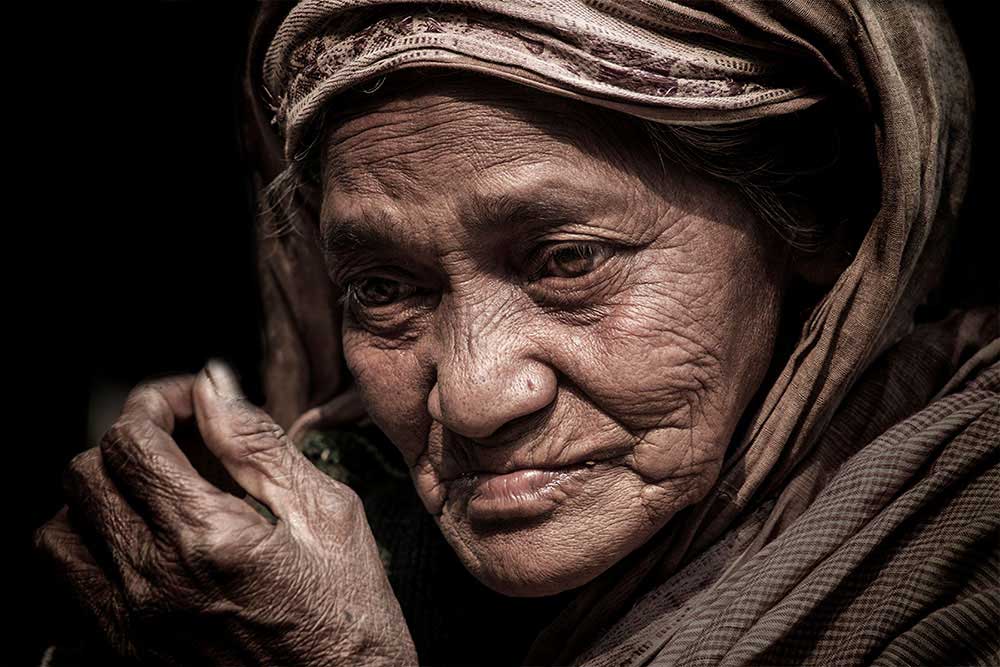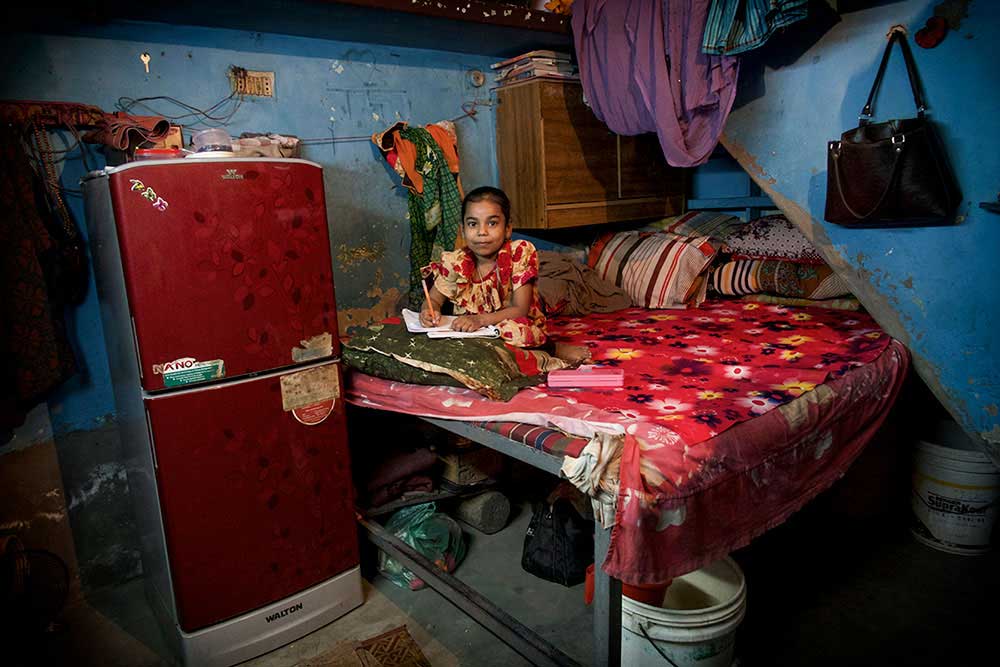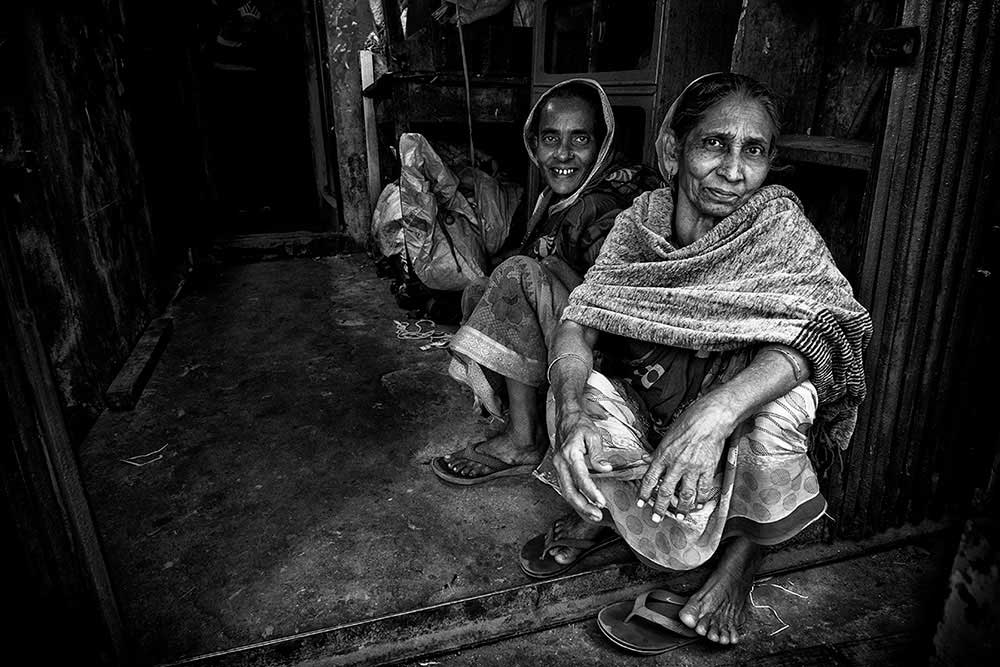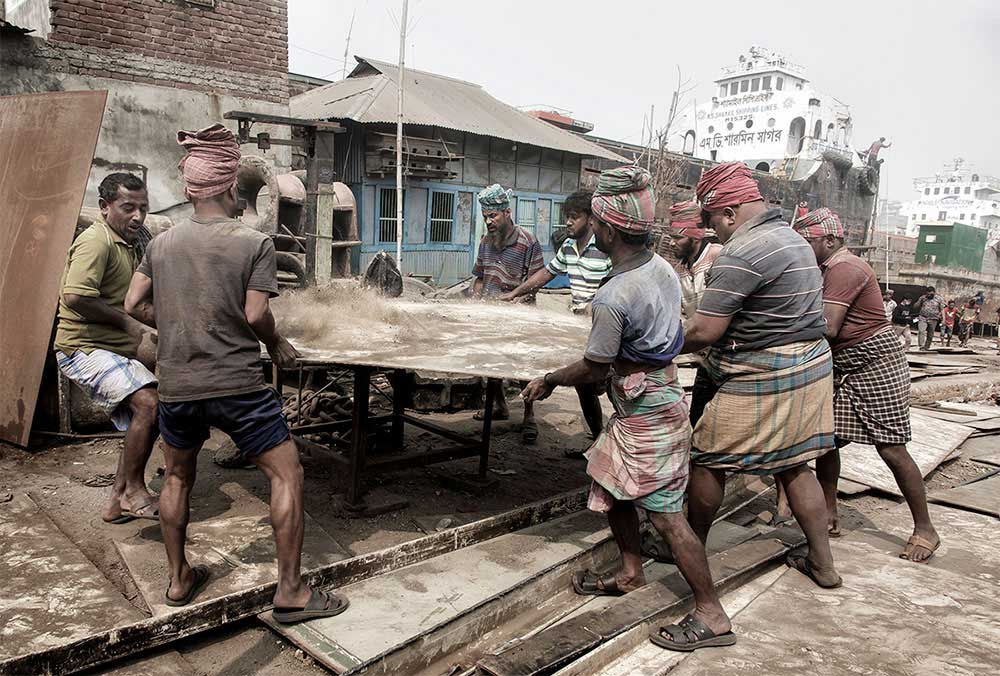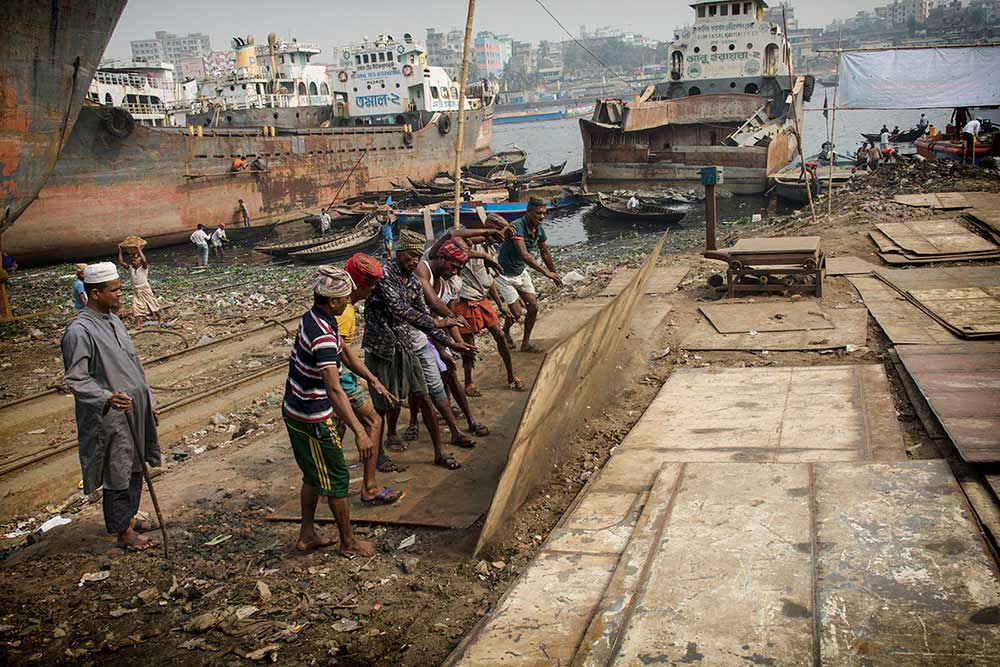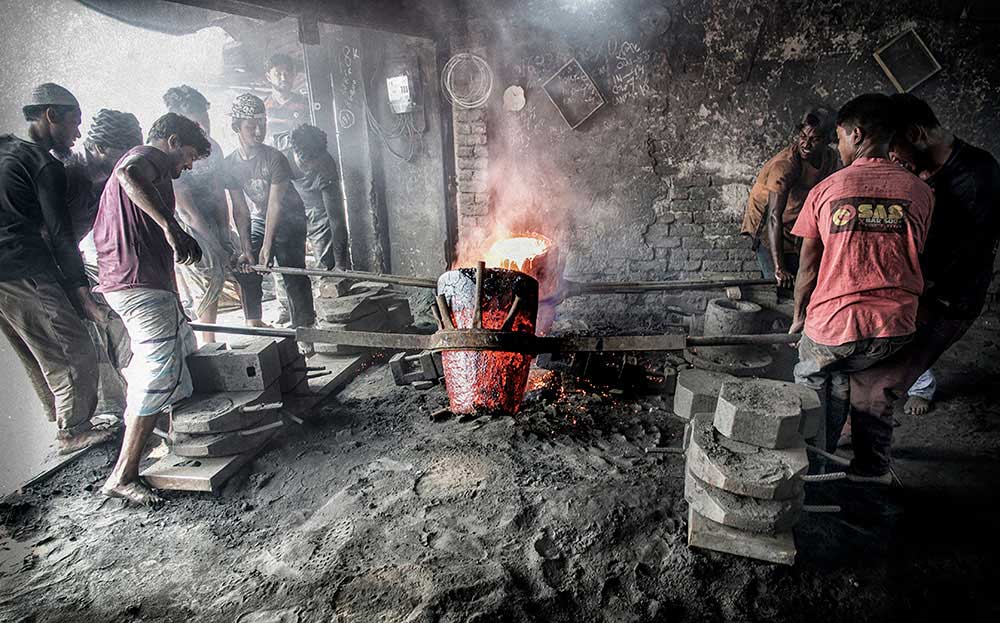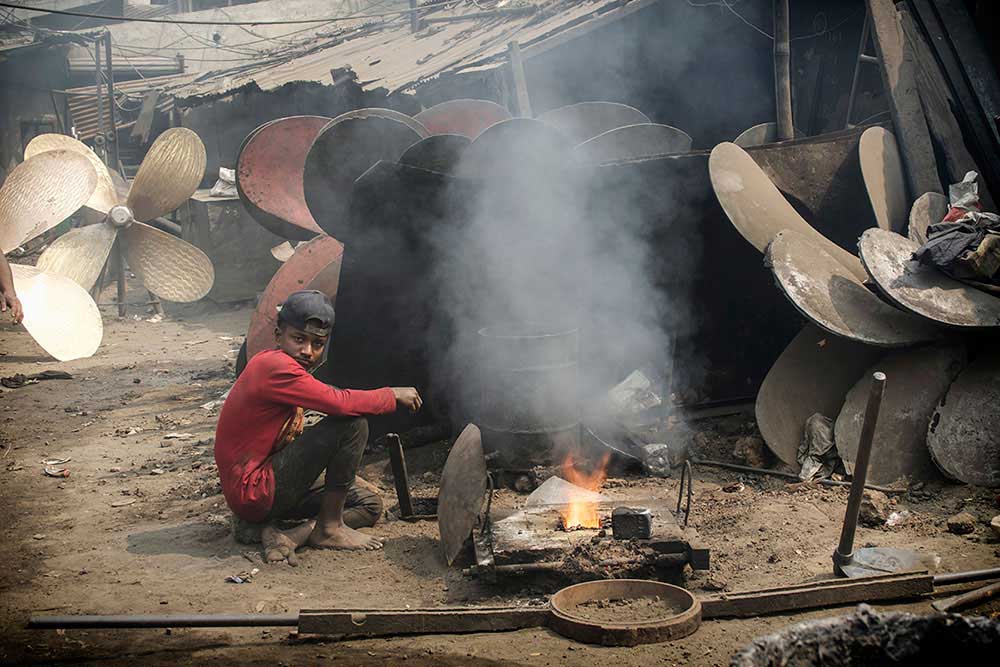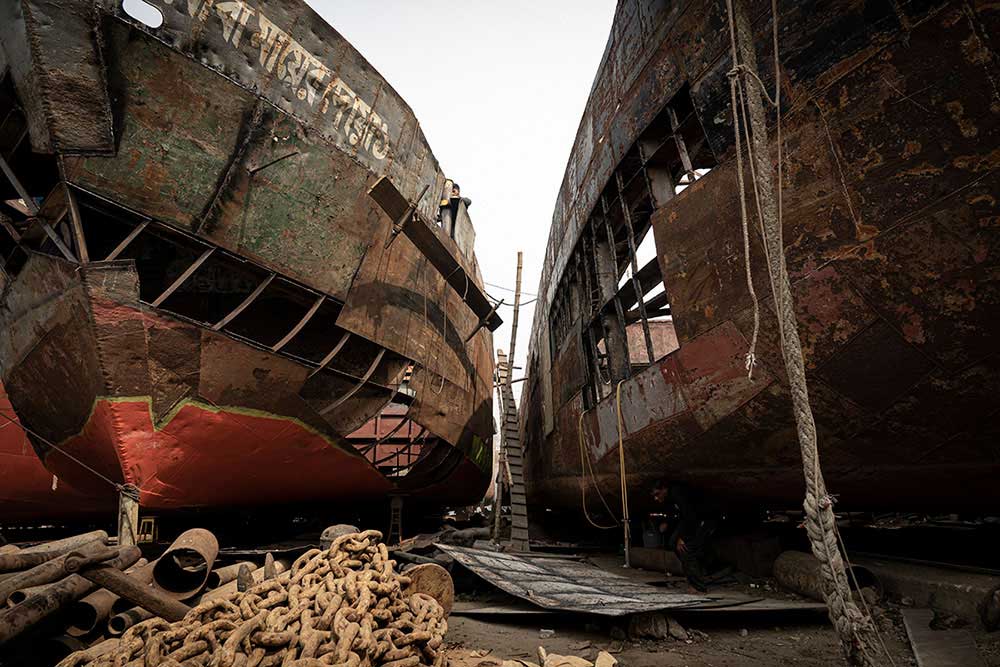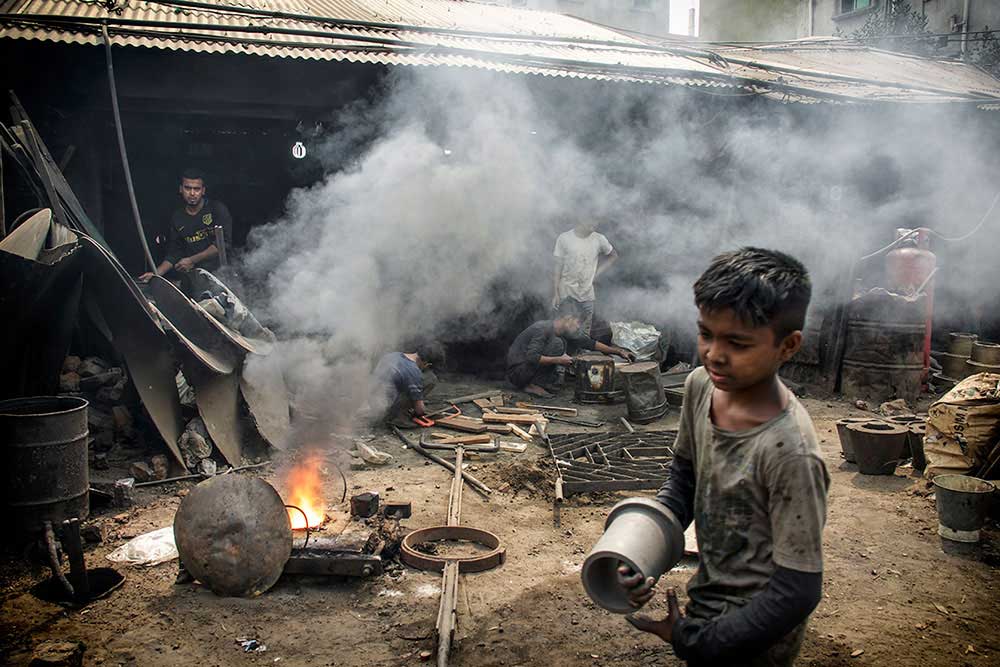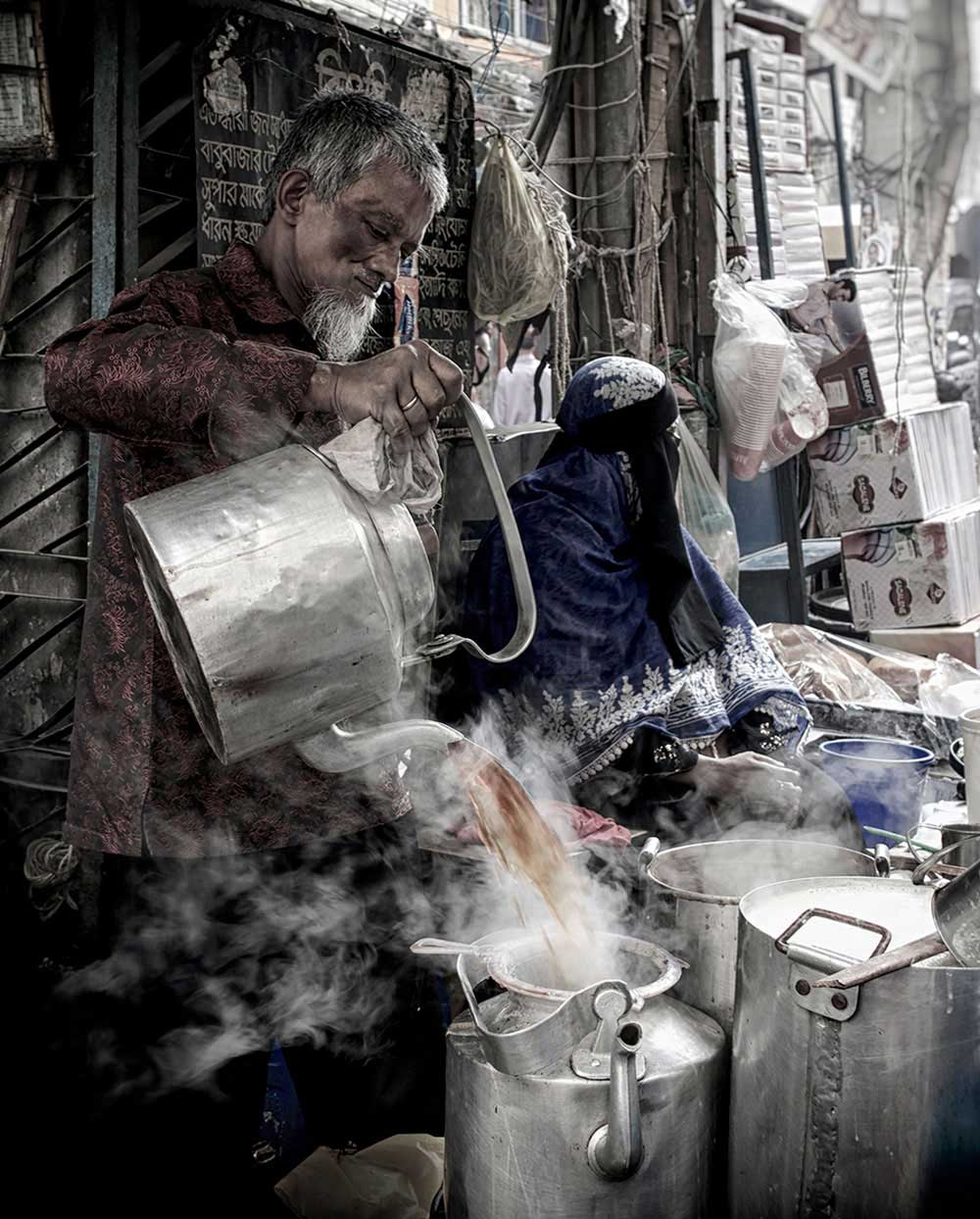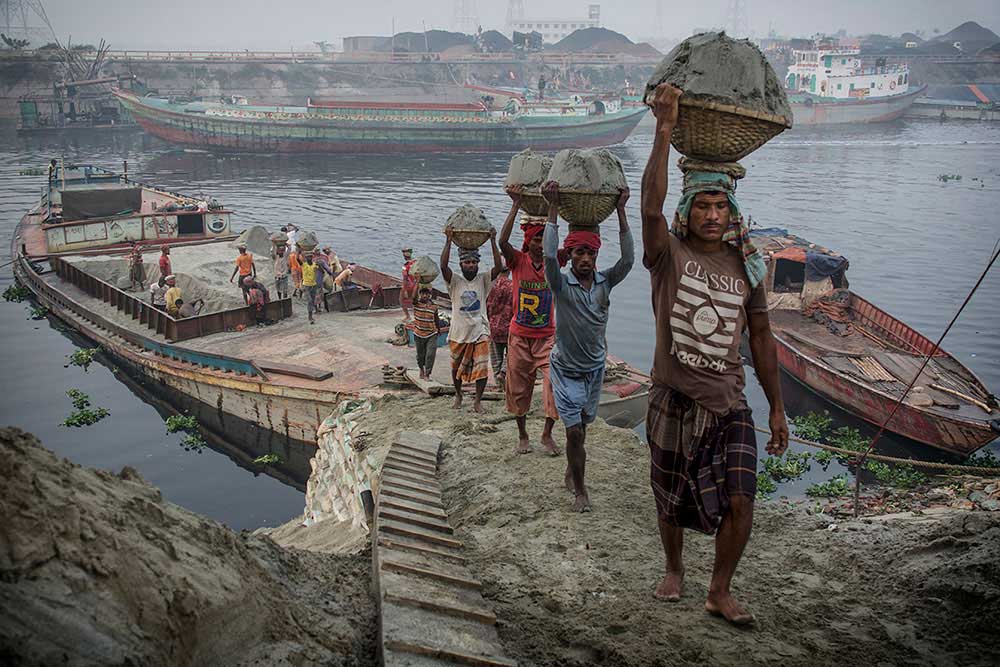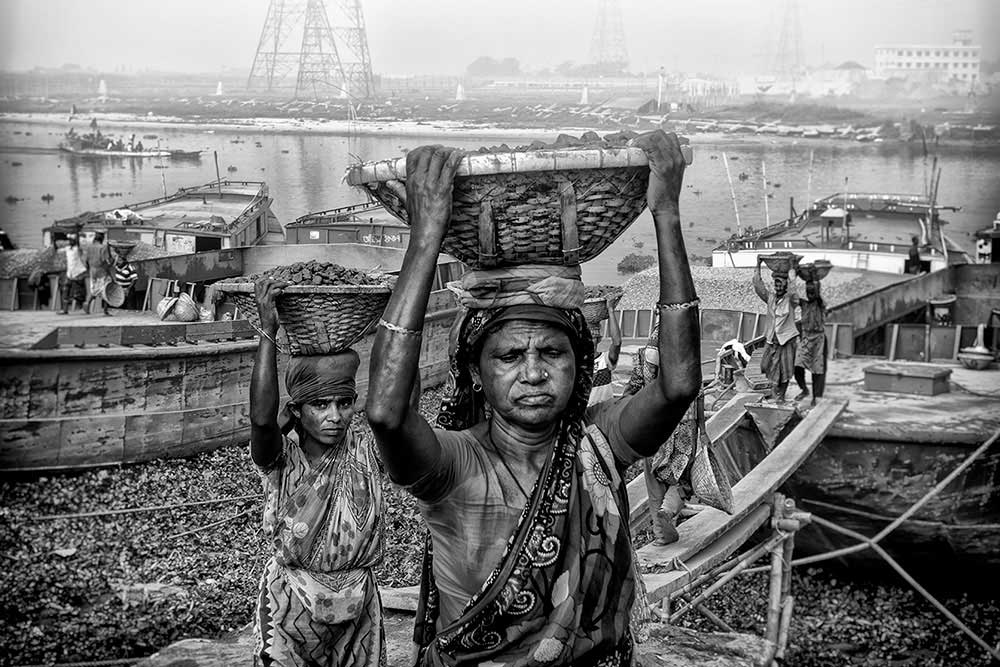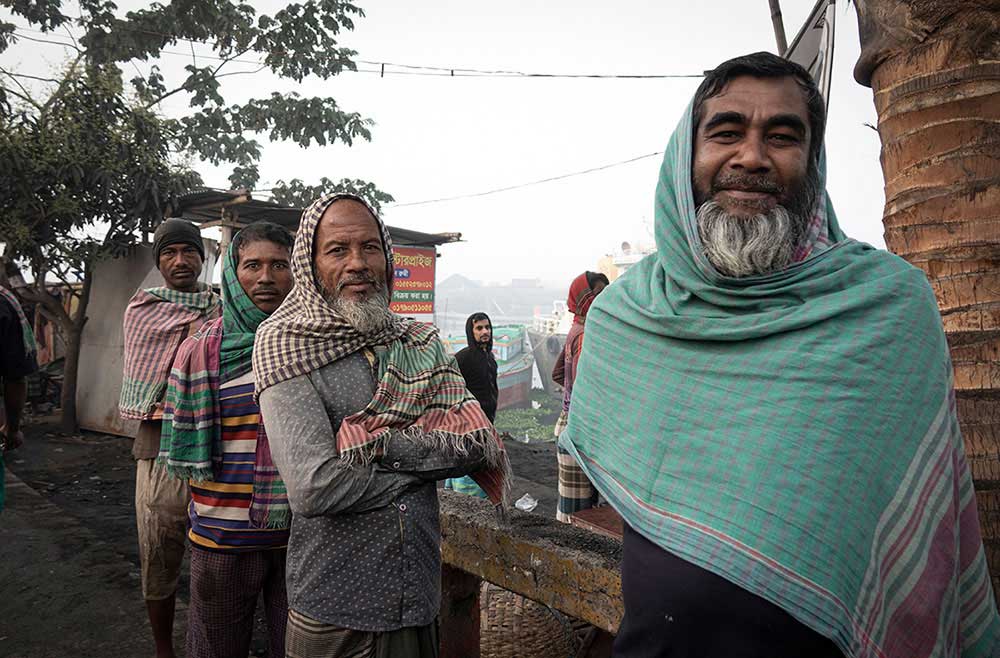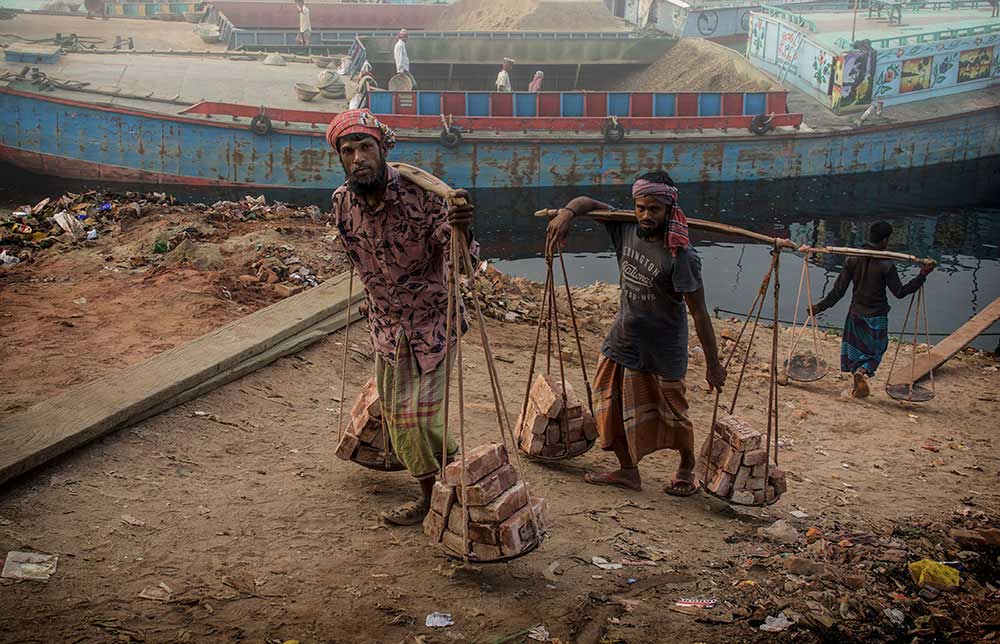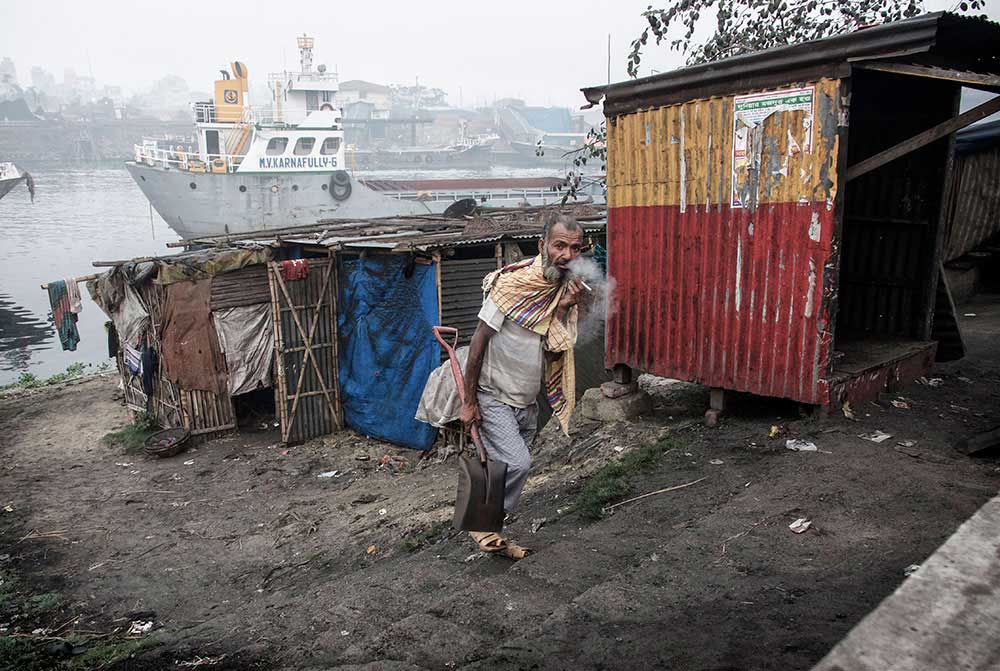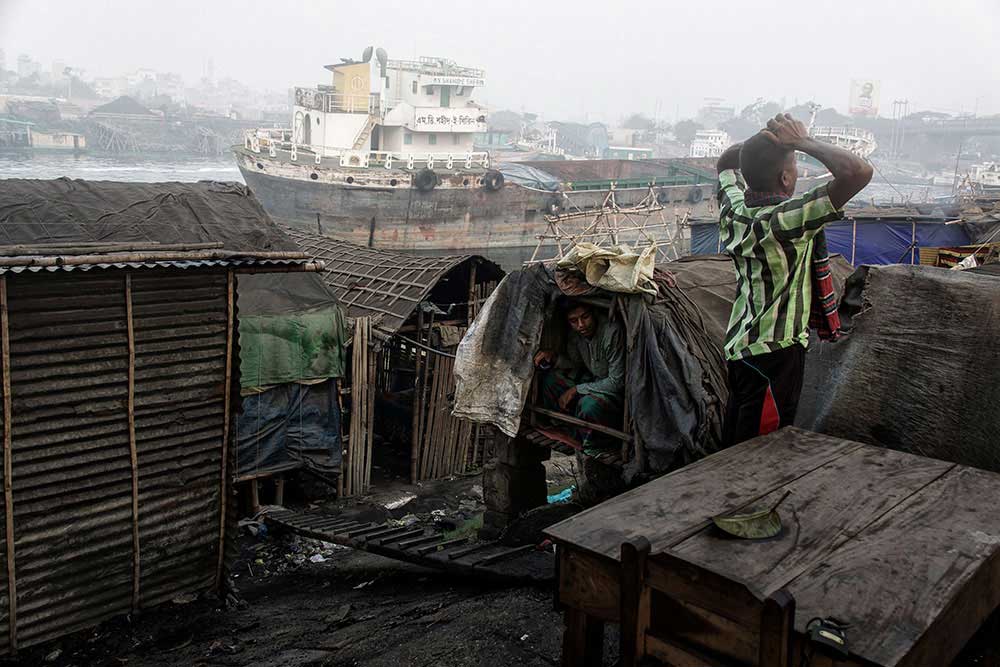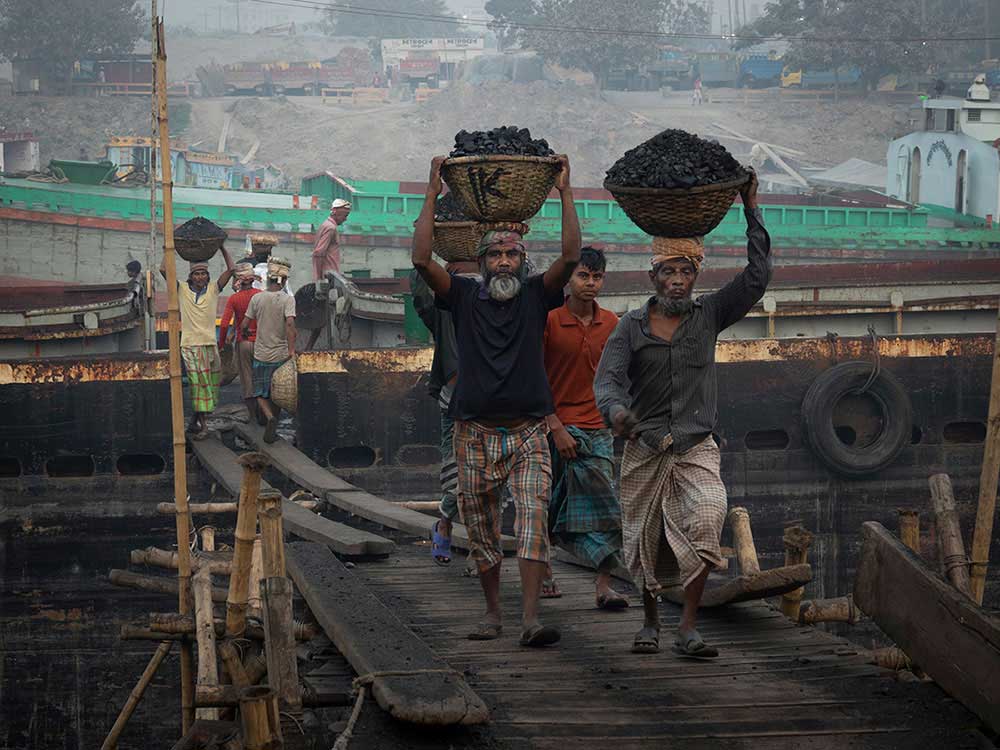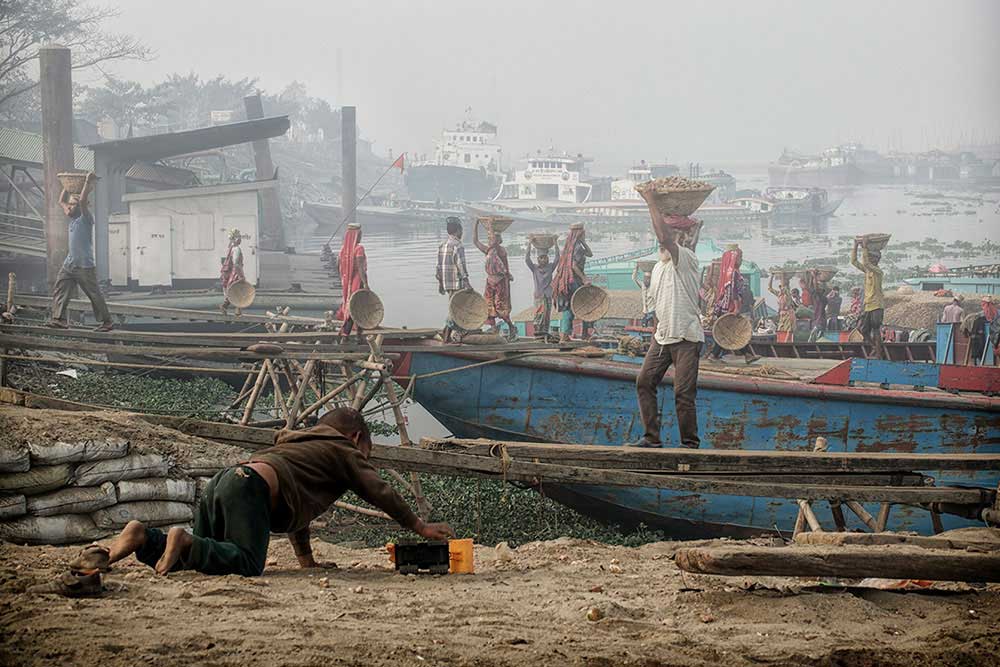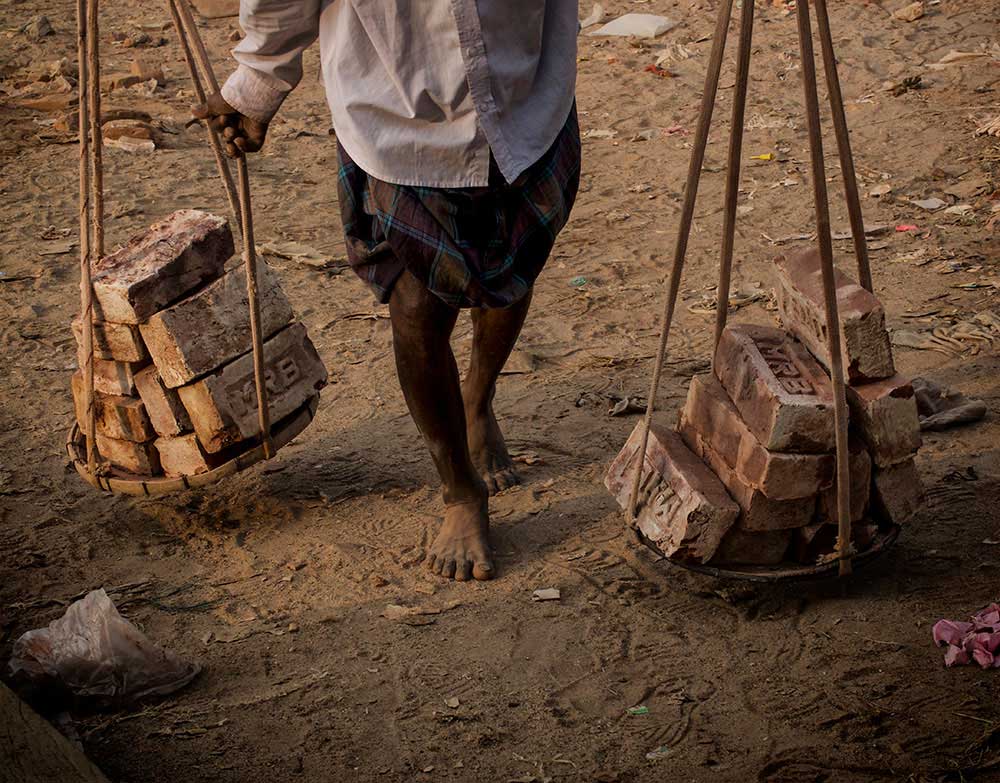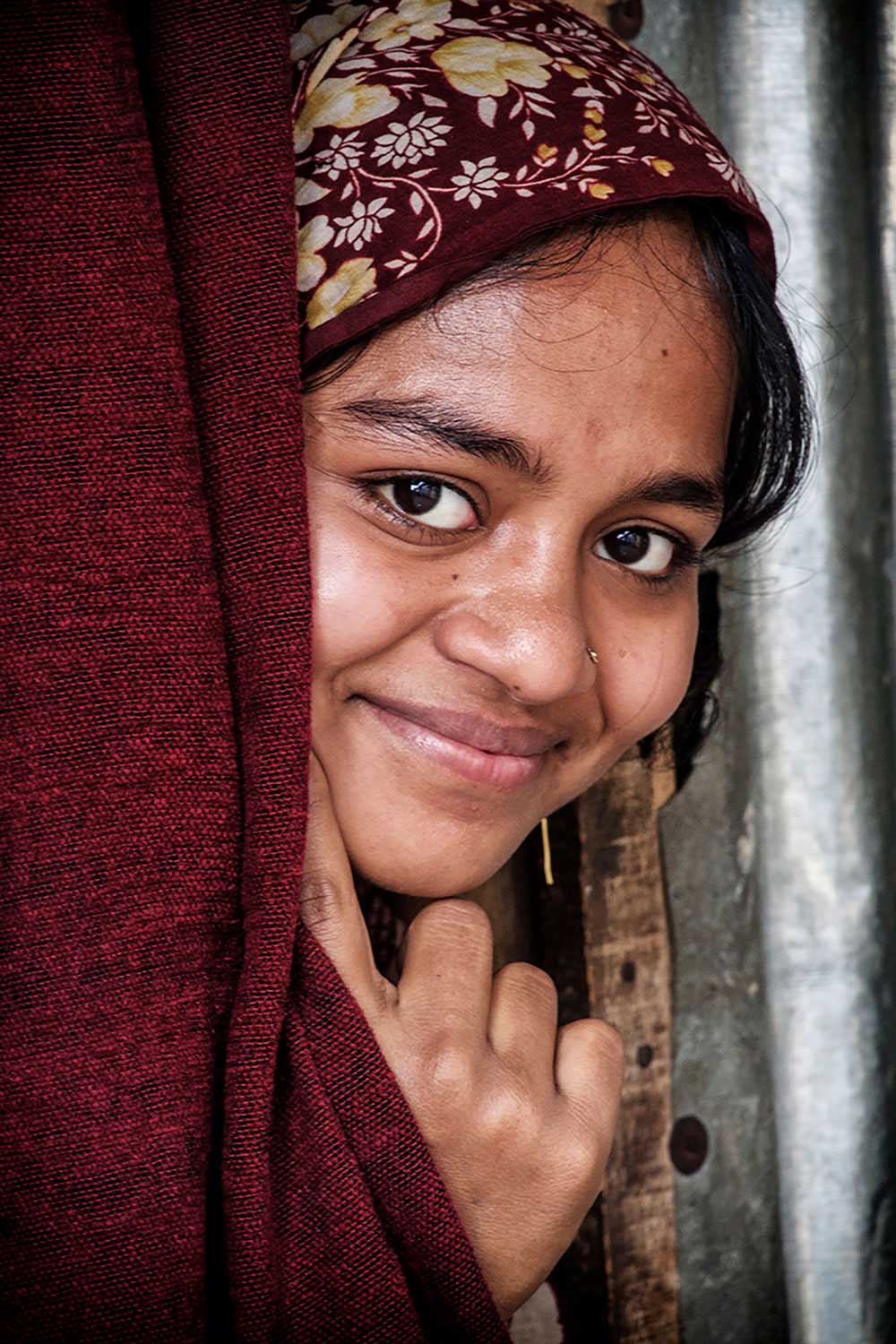No doubt that it was there, at Dhaka, when the spell began. My fascination kept growing and growing when roaming around the network of narrow winding streets in downtown.
Over there, I met that old woman who, sitting on the outskirts of the railway station, she seemed to be waiting without waiting; also the girl absorbed in her studies, sitting in the gloom of a tiny den, or those two women who, without having anything, owned the whole world… Yes, immersed in the daily life of extraordinarily friendly and smiling people, at thousands of miles away from where I live, I felt myself at home.
One day, early in the morning, I jumped aboard a rickshaw and among the lively fruit and fish markets I reached the Buriganga, the river that winds and gives life to the city. I took a boat and crossed it to go to the other side, it was like going through an invisible wall and suddenly see myself surrounded by the horrific hulls of cargo ships, stranded on dry land, in the middle of a labyrinth-like city plenty of giant skeletons of old ships. I went for a tea and talking with the local people there, I was told I was at Char Kaliganj, a shipyard that really looks like a swarm where everything has its specific place in the most absolute chaos. Something oppressed me, I could hardly breathe when watching the people and, above all, the barefoot children working there, breathing toxic fumes, permanent exposed to asbestos, to the most abrasive heat… All of a sudden, songs, more powerful than the sound of horns or the sirens of some ships, took me out of my daze. They were men who, through guttural sounds, made the earth vibrate with exorbitant force. Through these songs, those armies of indefatigable titans join forces, supporting each other, renewing the energy that will keep them united, preventing any of them from fainting and abandoning.
When the end of my trip was approaching, I decided to go back to Buriganga river, but this time I went to the north of the city where barges and also large ships arrived every dawn with their cargo: bricks, sand and coal, to be transported by the people who they’re, almost bathed by the waters of the river, had established their home. In that place I saw how the strength of men and women was reborn at every moment of pure alchemy, that it is possible to stop and smile even when we carry a huge load. With their backs and waist hunched from desperate exertion, they look into your eyes and smile with their mouths reddened by betel juice, that stimulating Areca nut that they chew to forget hunger. Like tireless ants, they went from one place to another without a pause, without a breath. On the way out, their huge empty baskets, on the way back, the heavy loads.
When walking with bare feet, allowing the sap of the earth to pass through the nakedness of the body and, in its ascent, reach the soul.
When laughter and tears merge into a tender embrace and, shortly, that same tenderness becomes convulsed, oppresses and tears knowing that this encounter is eternal. When the load becomes too heavy, the path slippery, the earth is soaked with your sweat, with your tears and you see yourself reflected in other pupils, allowing it flashes to blind you, it is then, and only then, when it arises from the deepest, that indestructible union and burns, with a ravishing force, the flame of hope.



